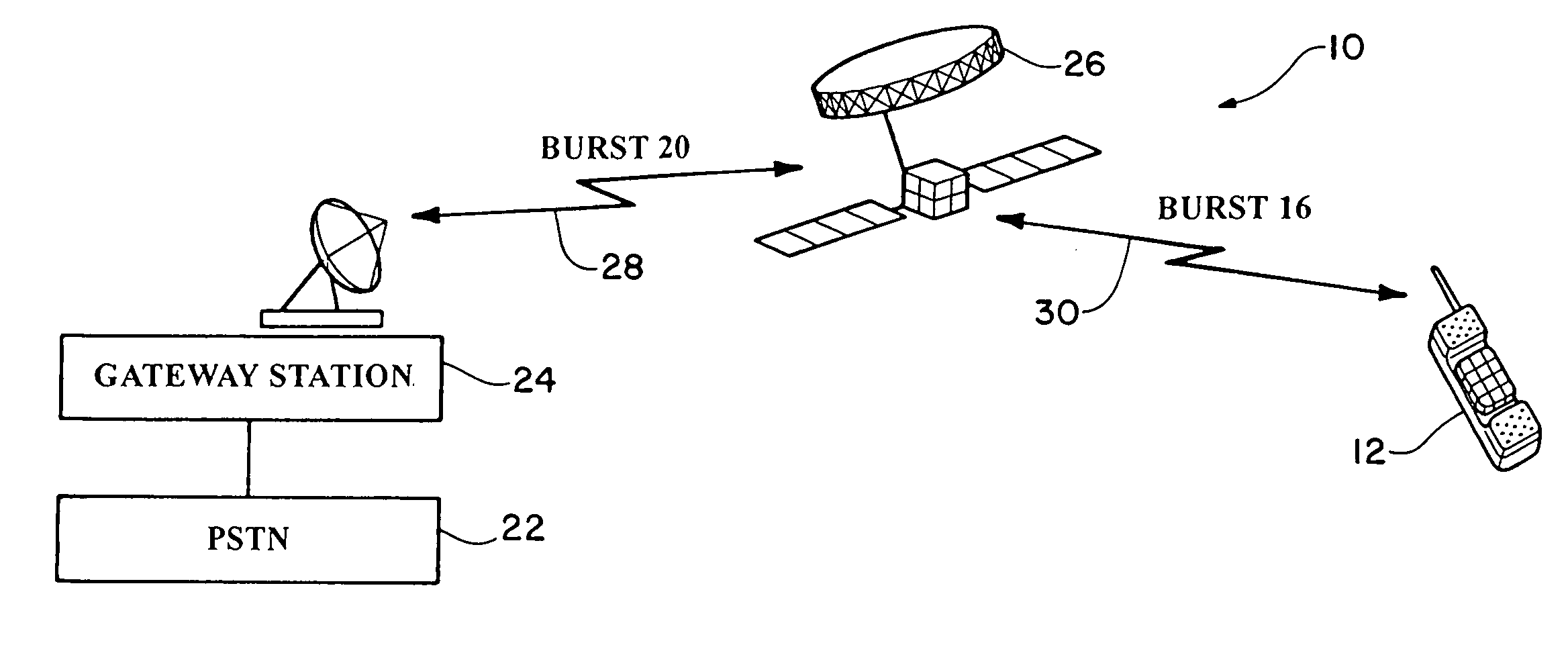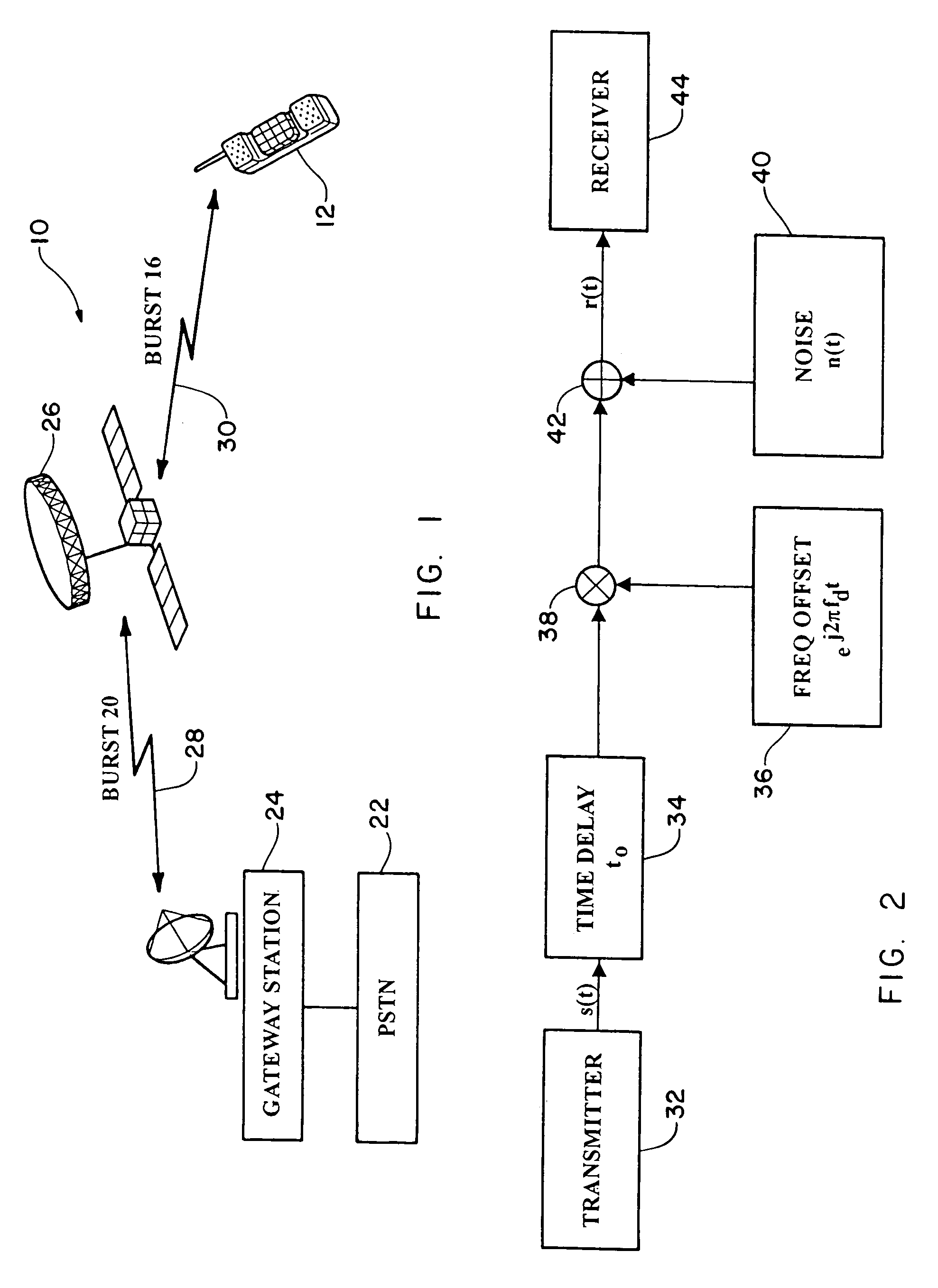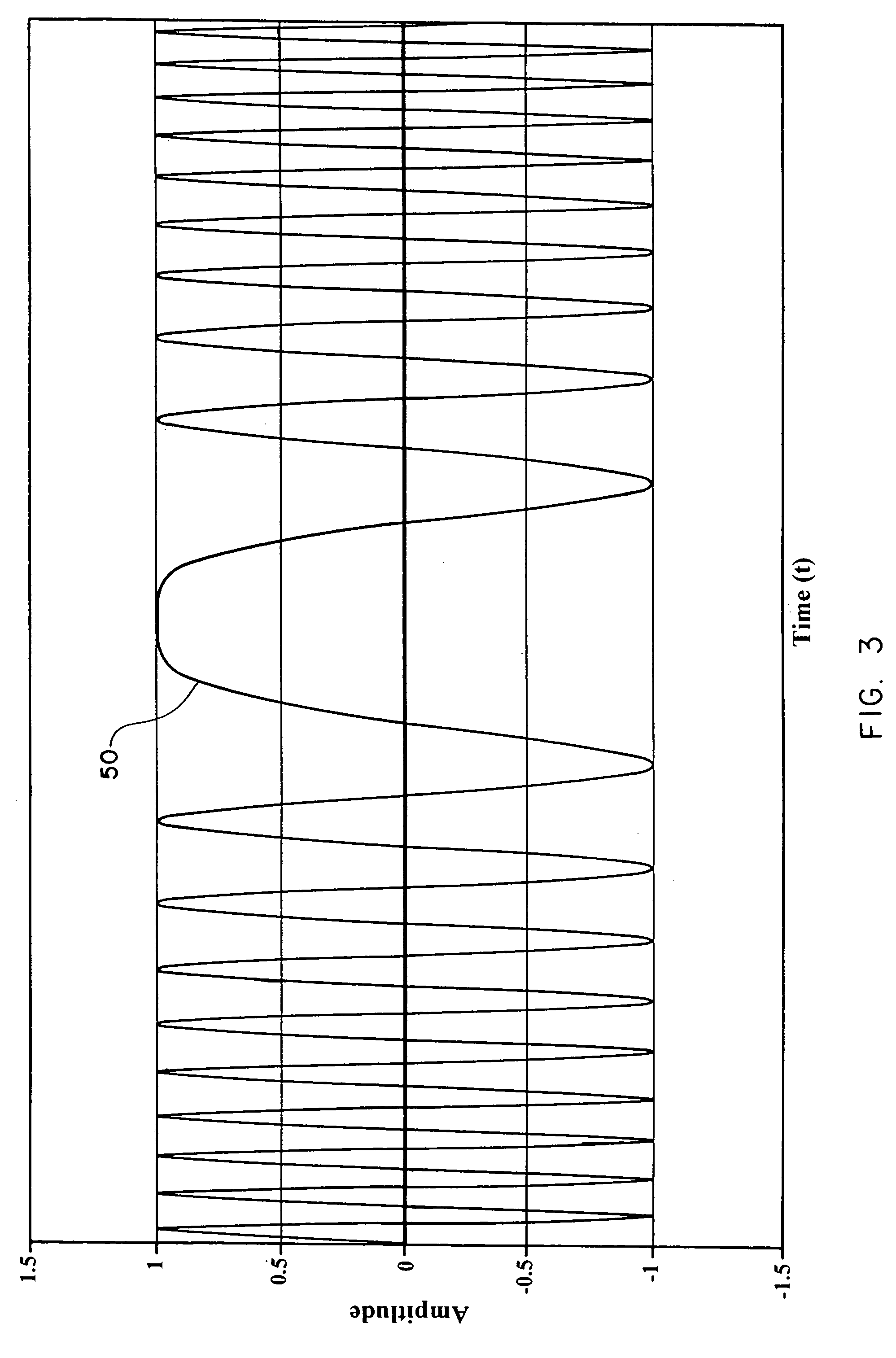Acquisition mechanism for a mobile satellite system
a satellite system and acquisition mechanism technology, applied in the field of signal synchronization, can solve the problems of time delay, 320 msec window the 5 msec waveform, and the mobile terminal does not know at what time, so as to enable the synchronization of the communications terminal
- Summary
- Abstract
- Description
- Claims
- Application Information
AI Technical Summary
Benefits of technology
Problems solved by technology
Method used
Image
Examples
Embodiment Construction
[0047]The following description of the presently contemplated best mode of practicing the invention is not to be taken in a limiting sense, but is made merely for the purpose of describing the general principles of the invention. The scope of the invention should be determined with reference to the claims.
[0048]Referring first to FIG. 1, a block diagram of a typical satellite communications system is shown. The satellite communications system 10 includes a first communications terminal or a gateway station 24 (also referred to as a base station), second communications terminal or mobile terminal 12 (also referred to as a wireless terminal or wireless transceiver), a public switched telephone network (PSTN) 22, a satellite 26, and communications links 28 and 30. The satellite communications system 10 is one embodiment in which the present invention may be practiced. It is noted that the terms communications terminal, terminal, and transceiver are used synonymously.
[0049]The public sw...
PUM
 Login to View More
Login to View More Abstract
Description
Claims
Application Information
 Login to View More
Login to View More - R&D
- Intellectual Property
- Life Sciences
- Materials
- Tech Scout
- Unparalleled Data Quality
- Higher Quality Content
- 60% Fewer Hallucinations
Browse by: Latest US Patents, China's latest patents, Technical Efficacy Thesaurus, Application Domain, Technology Topic, Popular Technical Reports.
© 2025 PatSnap. All rights reserved.Legal|Privacy policy|Modern Slavery Act Transparency Statement|Sitemap|About US| Contact US: help@patsnap.com



